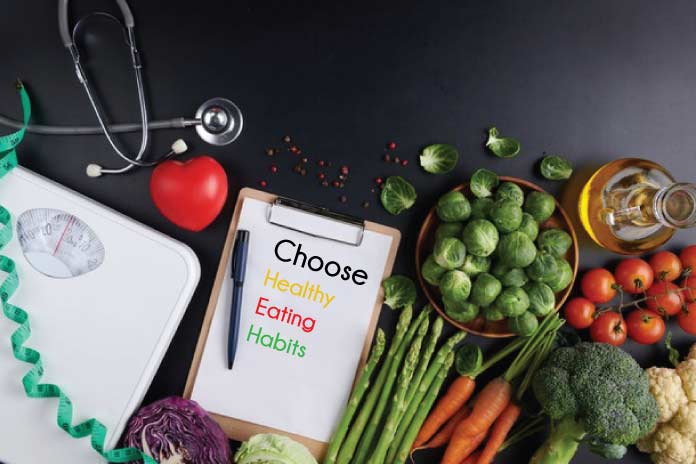
Although you've likely seen a BMI chart before you might not be familiar with it. A BMI chart is a visual representation of a person's weight and height. This chart can give you an indication of your ideal weight and help you make informed weight decisions. The chart indicates a person’s height, weight, and age in relation to height and years. It's a simple method to determine your BMI.
Look at the BMI chart and find your weight in pounds. Then, measure your height in feet and inches. Now, look across the chart and you'll find your BMI. If your BMI exceeds 245, the first chart is recommended. If your BMI is over 245, then you'll want to use the second. The shaded areas on the BMI chart indicate that you're overweight, so if you're in the 30s, then you're in class one. If you're between the 35-39.9 and 40 ranges, you might be in class two. If you're over 40, your are considered obese. If you fall in the middle of these two ranges, then choose the second.

BMI, however, is not a precise science. It is an imperfect measurement, but it accurately reflects a healthy weight. Although it's not perfect, it is a good tool to help you make healthy decisions about your weight and health. A BMI Chart can help you figure out what to do to lose weight or get in shape, especially if your BMI is high.
For people with difficulty using the calculator, a BMI chart can be helpful. BMI calculations do not consider gender, sex or pregnancy. You might have to adjust the numbers to suit your needs. BMI is not the only thing that should be considered when using a BMI calculator. However, it should be used to help you make informed decisions. The most important thing is to make an informed choice.
Remember that a higher BMI means you are more likely than others to get sick. Your BMI can be used to monitor your height and weight. It also helps you track your progress over time. With the help a BMI Chart, you can identify whether you are overweight or obese and then choose the best diet and exercise plan. Consult your doctor for a precise BMI chart if you are unsure.

Parents can use a BMI chart as a valuable tool. Children's BMI is different than that of adults, but it's still a good way to get a general idea of your child's weight. A healthy BMI for women ranges between 18.5 and 24.9, and a healthy weight for a woman is in the range of 18.5 to 24.9. A pregnant woman's pre-pregnancy weight can be used to determine how much she will gain in pregnancy.
FAQ
What is the problem with BMI?
BMI stands For Body Mass Index. This refers to the measurement of body fat using height and weight. Here is how to calculate BMI using the following formula.
Divide the weight in kilograms by the height in meters squared.
The result is expressed in a number between 0 - 25. A score of 18.5+ indicates that you are overweight. A score higher than 23 indicates that you are obese.
A person who is 100 kg in weight and 1.75m in height will have a 22 BMI.
What are the 7 tips to have a healthy life?
-
Make sure you eat right
-
Exercise regularly
-
Sleep well
-
Drink plenty of water.
-
Get adequate rest
-
Happy!
-
Smile often
Is being cold bad for your immune system?
Being cold gives you a weaker immune system because when you are cold, your body produces less white blood cells which fight infections. You will feel less pain if you are cold.
What can I do to boost my immune system?
The human body is made up of trillions and trillions of cells. These cells combine to form organs or tissues that serve specific functions. When one cell dies, another cell replaces it. Cells also communicate with each other using chemical signals called hormones. Hormones regulate all bodily processes, from growth and development to metabolism and immunity.
Hormones refer to chemicals produced throughout the body by glands. They travel through our bloodstream and act as messengers, controlling how our bodies function. Some hormones are produced internally while others are made outside of the body.
The release of hormones from a hormone producing gland into the bloodstream is the beginning of hormone production. Once hormones are released, they move through the body to reach their target organ. In some cases hormones can remain active for only a few hours. Other hormones stay active longer and continue to influence the body's functioning even after they leave the bloodstream.
Some hormones may be produced in large numbers. Some hormones are produced in large quantities.
Some hormones are made at certain times in our lives. Estrogen is one example. It's produced in puberty, pregnancy and menopause. Estrogen aids women in developing breasts, maintaining bone density and preventing osteoporosis. It is also known to promote hair growth and keep skin soft and smooth.
What's the difference of a calorie versus a Kilocalorie?
Calories are units that measure how much food has energy. A calorie is a unit of measure. One calorie contains the energy needed to raise the temperature of one gram of water by one degree Celsius.
Kilocalories are another way to describe calories. Kilocalories can be measured in thousandsths of one calorie. For example, 1000 calories equals one kilocalorie.
How often should I exercise?
Exercise is essential for maintaining a healthy lifestyle. There is no set time limit for exercising. The key is finding something you enjoy and stick with it.
If you work out three times a week, then aim to complete 20-30 minutes of moderate intensity physical activity. Moderate intensity will mean that you'll continue to be exerting yourself afterward. This type works out burns around 300 calories.
If you prefer to walk, go for 10 minute walks four days a week. Walking is low in impact and easy for your joints.
If you'd rather run, try jogging for 15 minutes three times a week. Running is an excellent way to lose weight and tone your muscles.
You can start slow if you're new to exercise. Start with just 5 minutes of cardio a few times a week. Gradually increase duration until you achieve your goal.
Exercise: Good or Bad for Immunity?
Exercise is good for your immune systems. Exercise boosts the production of white blood cells, which can fight off infections. You also get rid of toxins from your body. Exercise is a great way to prevent heart disease, cancer, and other diseases. Exercise also helps to reduce stress levels.
Exercising too frequently can make your immune system weaker. When you exercise too hard, your muscles will become sore. This can cause inflammation as well as swelling. To fight infection, your body will produce more antibodies. This can lead to allergic reactions and other autoimmune disorders.
So, don't overdo it!
Statistics
- In both adults and children, the intake of free sugars should be reduced to less than 10% of total energy intake. (who.int)
- WHO recommends consuming less than 5% of total energy intake for additional health benefits. (who.int)
- nutrients.[17]X Research sourceWhole grains to try include: 100% whole wheat pasta and bread, brown rice, whole grain oats, farro, millet, quinoa, and barley. (wikihow.com)
- WHO recommends reducing saturated fats to less than 10% of total energy intake; reducing trans-fats to less than 1% of total energy intake; and replacing both saturated fats and trans-fats to unsaturated fats. (who.int)
External Links
How To
27 Steps to a healthy life when your family eats only junk food
Cooking at home is the most popular way to eat healthier. However, this is often difficult because people do not know how to prepare healthy meals. This article will give you some tips on how to make healthier choices when eating out.
-
Select restaurants that offer healthy dishes.
-
Before you order any meat dishes, make sure to order salads or vegetables.
-
Ask for sauces without added sugar.
-
Avoid fried items
-
Grilled meats are better than fried.
-
Do not order dessert unless you really need it.
-
Be sure to have something other than dinner.
-
Always eat slowly and chew your food thoroughly.
-
Drink plenty of water while eating.
-
Don't skip breakfast and lunch.
-
Take fruit and vegetables along with every meal.
-
Consider drinking milk instead of soda.
-
Try to avoid sugary drinks.
-
Limit salt consumption in your diet.
-
Try to limit the number of times you go to fast food restaurants.
-
Ask someone to join if temptation is too much.
-
Make sure your kids don't spend too much time on TV.
-
During meals, turn off the TV.
-
Do not consume energy drinks.
-
Take frequent breaks from your job.
-
Get up early in the morning and exercise.
-
Get active every day.
-
Start small and then build up slowly.
-
Set realistic goals.
-
Be patient.
-
Even if you don’t feel like exercising, make time for it.
-
Use positive thinking.